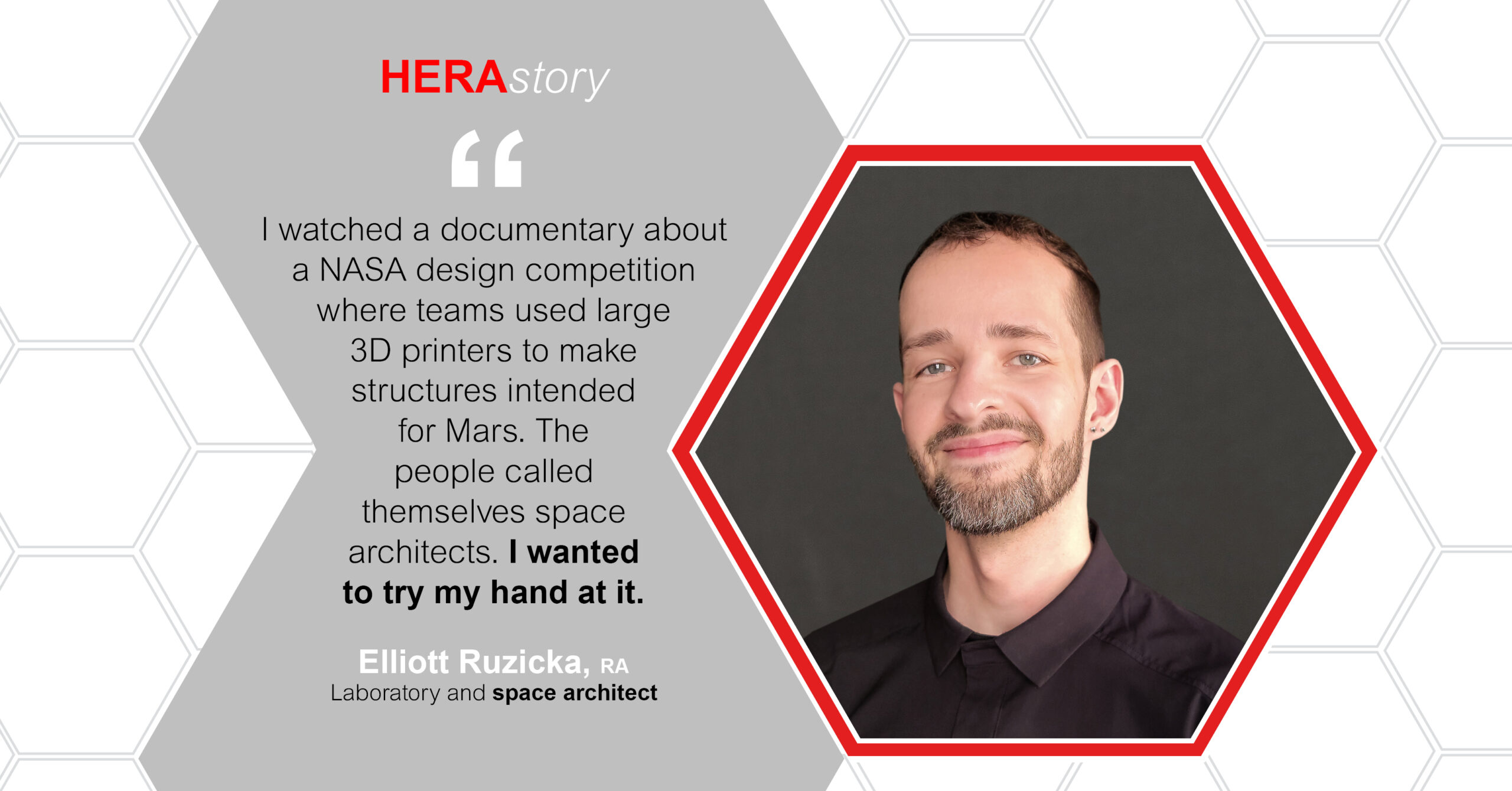Q&A with Laboratory Architect Elliott Ruzicka, RA
Tell me about your website Orbital Design
That came out of a pandemic project where, like everyone else, I was at home and needed a distraction. I watched a documentary about a NASA design competition where teams used large 3D printers to make structures intended for Mars. When the people participating in this competition called themselves space architects, it gave me pause. I didn’t know that was even a thing; I thought it was all engineering. I wanted to try my hand at it and see what I could bring to the table. That’s when I started my website where I post my research and published papers. I have found the more that I learn, the more I want to learn; the design ideas follow naturally.
You’ve presented and written about design for space habitat modules. What ideas are you proposing?
Space station architecture so far has pretty much been connecting aluminum cans together. My idea for polyhedral space habitat modules recognizes that shape plays a pretty major role in space structures, and each shape has unique properties that could provide benefits or detriments. Part of my research has been in exploring which shapes are the best to use.
How did you put it to the test?
I used 14 metrics. Some were simple, like volume to surface area ratio, or the shape can tile-fill three-dimensional space. For example, if you try to connect a bunch of tetrahedrons (triangular pyramids), it gets messy quickly. There’s a lot of gaps in between the pieces. Then there are other considerations such as structural performance and geometric efficiency. Here’s where it gets interesting: Instead of applying those metrics flatly across the board or even applying subjective weighting, I used Python to do an analysis I call “exhaustively weighted, multi-criteria analysis.” I calculated all combinations of the total scores for each of 10 shapes across the 14 metrics, each metric having one of five simple weights. It ended up being more than six billion calculated scores. My computer ran for almost seven days just doing the calculations. It tallied the winner for each of the billions of combinations, and I was expecting a distribution of wins across the shapes. Instead, a single shape won every time (the rhombic dodecahedron)! That result was impressive to both the community and myself, actually.
What’s next?
In October I presented two papers at the International Astronautical Congress in Milan, Italy. One paper details my proposed polyhedral space habitat module design, which utilizes flat panels that unfold into their final shape. Another ongoing paper, which is much more futuristic and ambitious, is about how to exceed the conventional size limitations for rotating space habitats through decoupling the rotating portion from the structural portion. I am also researching how to best organize the habitable interior space of a large rocket (such as the SpaceX Starship) so the same configuration works under both terrestrial gravity and microgravity. It’s an interesting design problem if you think about things like stairs that we need on the ground, but in space they’re just not usable.
At HERA, you’re now working on an equipment planning project at the NASA Marshall Space Flight Center in Huntsville, Alabama. How have you been able to use your knowledge and passion in this project work?
I had the opportunity to visit the NASA Marshall Space Flight Center and was pleased to be shown around some of the facilities. Knowing a bit more about the field allows me to ask the right questions about what any individual piece of equipment is used for, how it works, how it affects their process, that sort of thing. I’m all about asking the right questions because that’s where the problems and their solutions really get fleshed out. As I talk to the users, they perceive my excitement and want to give me more information. It builds trust. I bring that excitement with me to any project I work on because all of our clients’ work and research is so interesting.
What are you most excited about with the future of space exploration?
In the near term, I’m most excited about commercial space stations. I don’t find the function particularly exciting because I think a lot of it is going to be tourism. But using space for private research, by private astronauts, will open the field up. This commercialization and new private space stations is especially exciting for the design field because if owners offer options like tourism, they’re going to want nicer facilities up there. It’s an opportunity for space architects like myself to test their design chops. It’s a new frontier that we don’t really know how to design for – not even space architects – because habitats haven’t yet been tested for a longer period. Longer term, I’m very excited for the potential of testing some sort of rotating habitation that provides the sensation of gravity in space. The work being done today is the precursor work for what may be years away. I’m happy to be part of that if I can be.
